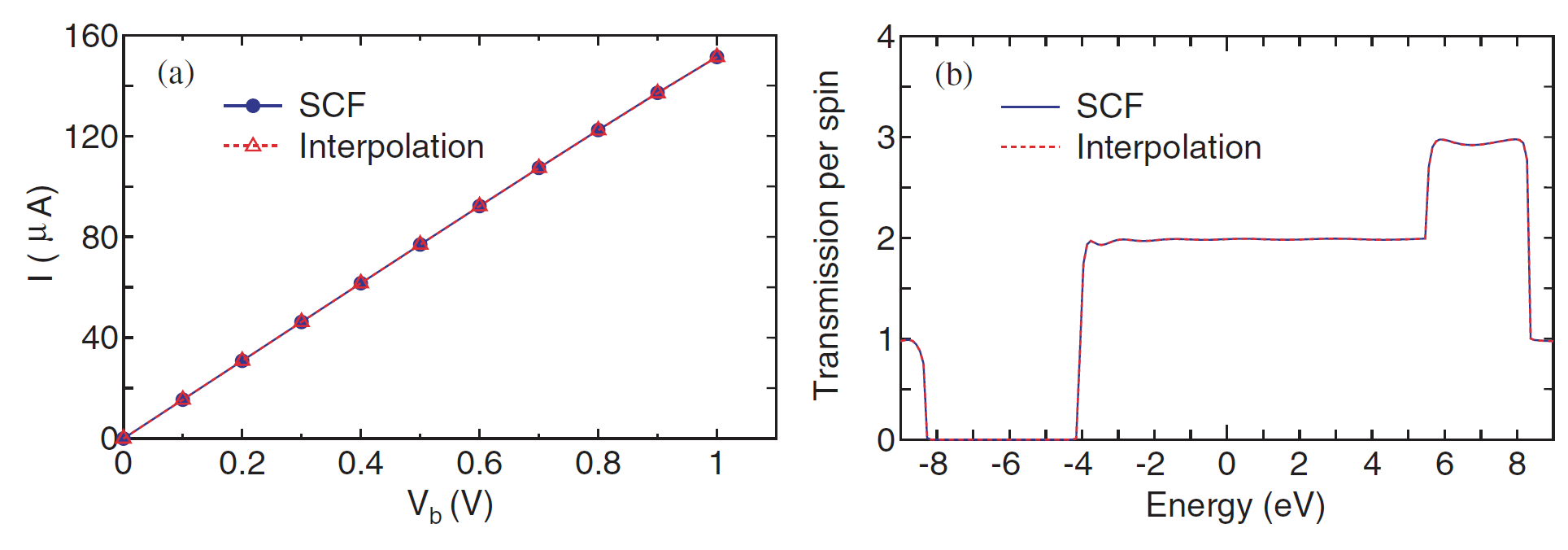Next: Parallelization of NEGF Up: Electric transport calculations Previous: Periodic system under zero Contents Index
Since for large-scale systems it is very time-consuming to perform
the SCF calculation at each bias voltage, an interpolation scheme
is available to reduce the computational cost in the calculations
by the NEGF method.
The interpolation scheme is performed in the following way:
(i) the SCF calculations are performed
for a few bias voltages which are selected in the regime of the bias
voltage of interest.
(ii) when the transmission and current are calculated,
linear interpolation is made for the Hamiltonian block elements,
![]() and
and
![]() , of
the central scattering region and the right lead, and the chemical
potential,
, of
the central scattering region and the right lead, and the chemical
potential, ![]() , of the right lead by
, of the right lead by
In the calculation of the step 3, the interpolation is made by adding the following keywords in the input file:
NEGF.tran.interpolate on # default=off, on|off NEGF.tran.interpolate.file1 c1-negf-0.5.tranb NEGF.tran.interpolate.file2 c1-negf-1.0.tranb NEGF.tran.interpolate.coes 0.7 0.3 # default=1.0 0.0
 |
A comparison between the fully self consistent and the interpolated results is shown with respect to the current and transmission in the linear carbon chain in Figs. 36(a) and (b). In this case, the SCF calculations at three bias voltages of 0, 0.5, and 1.0 V are performed, and the results at the other bias voltages are obtained by the interpolation scheme. For comparison we also calculate the currents via the SCF calculations at all the bias voltages. It is confirmed that the simple interpolation scheme gives notably accurate results for both the calculations of the current and transmission. Although the proper selection of bias voltages used for the SCF calculations may depend on systems, the result suggests that the simple scheme is very useful to interpolate the effect of the bias voltage while keeping the accuracy of the calculations.
2016-04-03